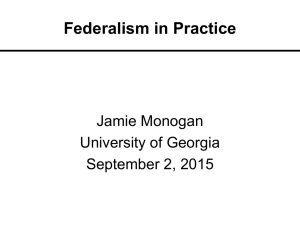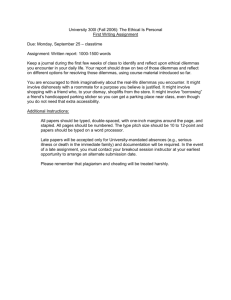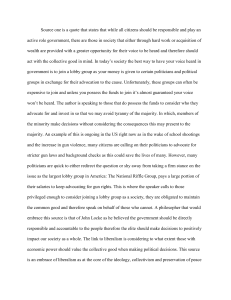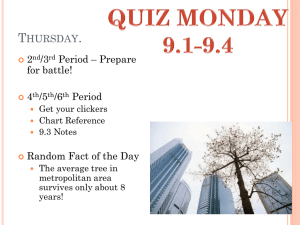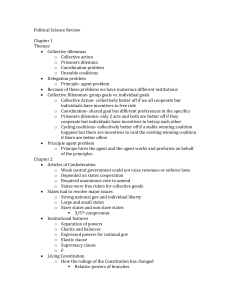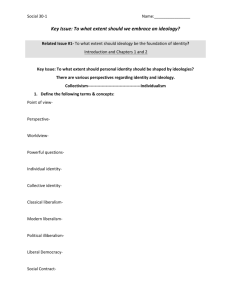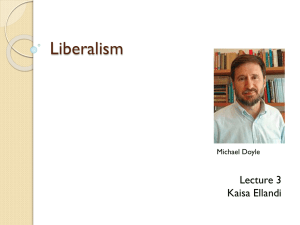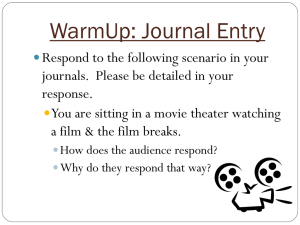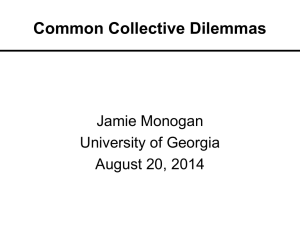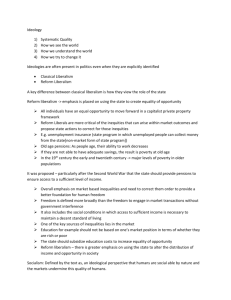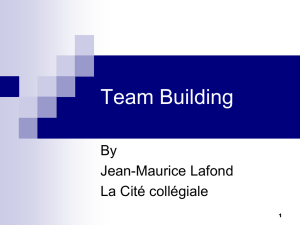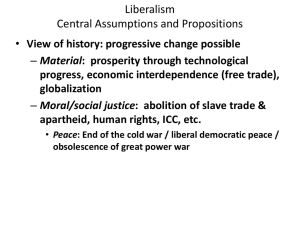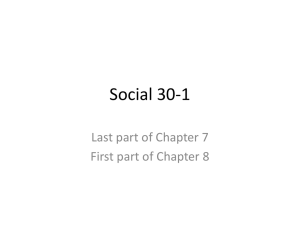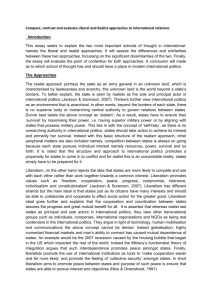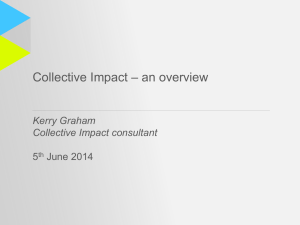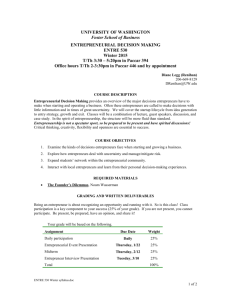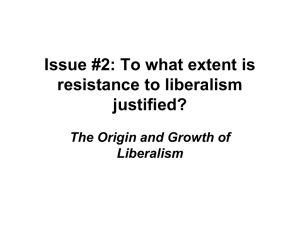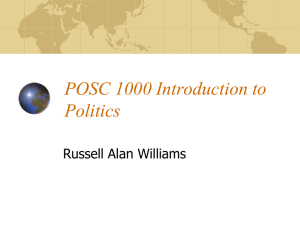Federalism in Practice - University of Georgia
advertisement
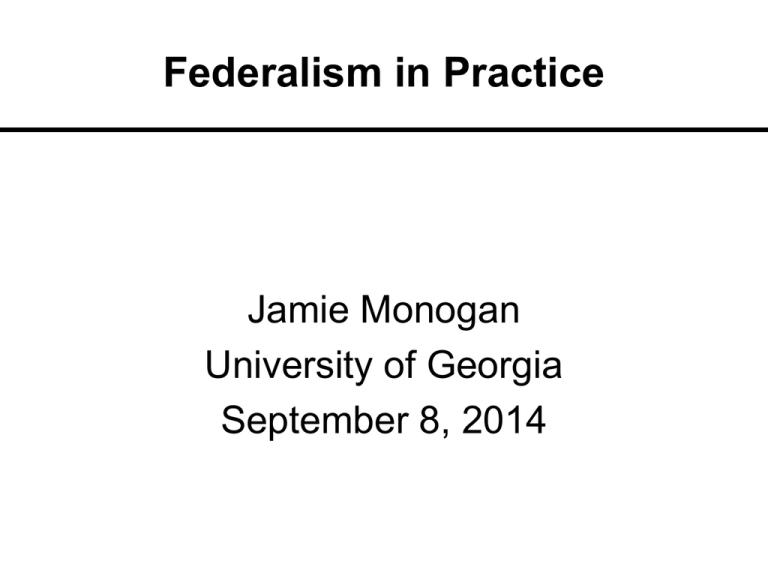
Federalism in Practice Jamie Monogan University of Georgia September 8, 2014 Objectives By the end of this meeting, participants should be able to: • Differentiate collective dilemmas that can be solved with more federal power from those that call for more state power. A Puzzle • The Constitution establishes a system of shared power between states and the federal government. • Why have the states and the American people allowed the federal government’s power to grow in the past century? Federalism as Response to Collective Dilemmas • Increased federal authority can help solve collective dilemmas – Prisoner’s dilemma: Prevent states/units from going to war with each other – Collective action problem: Protect states/units from outside aggression – Free rider problem: Set national standards for labor and environmental laws Air Polluters in Georgia 33 32 31 Latitude 34 35 White dots=solid waste. Black plus signs=air polluters. + ● + + ++ ● ● + + + + +●+● ● ● +●● ● ●● ● + + + ●● + + + ● + ● + +++ + + ++●●●+●● ● + ●+ ●+ ++++ +●●●+● ++● ++ ++ ● ●+ ● ● ++● +++●●+ ● + + +● ●+● ● + +●●● + ●● +●+●+● +●● + +● ++ ++ +●● ++ ●●● ● ●● + ● ●+ + ● + ● + ● + ● + ● ● ++ ● ●●●● ●● ++ ●● ● + ● + + ++● ●+ ● ●++ + ●+ ●+ ● + + + ●+ ●● + ++●+ ●● ●●●● ++ ++● ● + ●● ●+ ●+ ●+ + ● +●+ + ●+ + ●●●+ ●+ + +●+● ++● + + ●●● ●+ + ●+ + ++●● +●●●●+ ● ●● + + ++ +●● ++ + ● + + +● +●+● ++ ●●+ +● ●+ ● + ● +● ++ +●+ ++++ ++++++● ++ ++ ++ ●●+ ●● ●+ + + + +++ ++ ++●●+ + + ● +●+ + + + + + + + + ● + ●● + + ++ ● ++ ++● + ++ +++ ●+ ●+ ●● +++ ●+ ● + ● ++ + + + + + + + ● + + ● ● ●+ ●● ●●● ++ + + + ● + + ● ++ ● + ++++ + + + + ●●● + ●+ ++ ++++ ++ + ● +● ++ + ● + ● + ++● + + ● + +●●●+●● ● + +● ++ ●++ + + ●+ + ● + +●+●++ + + + + + ●+ ++●+● + +● + + ● + + ++ ++ + + ++ +● ●+ ●+ + + + + ● ● + ● ++ +●●++ + + ●● + +●+ ++● + + + +●● ++ + ● + +++●●● ++ ++ + + + + ++ + ● +●+ ● + + + ●+ + + ● ●● ●+ ++●●● + + + + + −85 −84 −83 Longitude −82 −81 Federalism and Competition • Competition and innovation across states has mixed effects • Experimentation in states can produce evidence for new, effective policies • Competition for industry can reduce tax base – Race to the top/bottom Laboratories of Democracy 50 The Emergence of State Lotteries ● ● ● ● ● ● ● ● ● 40 ● ● ● ● ● ● ● 30 ● ● ● ● ● 20 ● ● ● ● ● ● ● ● ● ● 10 ● ● ● ● ● ● ● ● ● ● ● 0 Number of States With Lotteries ● ● ● ● ● ● ● ● ● 1970 1980 1990 Year 2000 2010 Differing Preferences and Coordinated Policy • In many policy areas, coming to no solution is problematic • Different locales may have different policy preferences • In some cases, devolution can eliminate a national-level coordination problem Do People Get What They Want? Opinion Liberalism v. Policy Liberalism Future Day: Delegate v. Trustee Representation 6 CA NY MD DE NM 2 WV ME WAIL CO SC 0 MO IA −2 NE KS TX IN OK MS ND SD ID AL UT TNAR LA NC RI NJ NH MI OH PA WI AZ KY VA GA −10 CT OR MT −4 Public Policy Liberalism 4 MN VT MA NV WY FL 0 10 Public Opinion Liberalism 20 Federal Influence on State Spending • Grants-in-Aid – General programs (e.g., infrastructure) • Categorical Grants – School lunches • Revenue Sharing – Interstate highways • Block Grants – 1995 welfare reform • Contrast: Unfunded Mandates – All Handicapped Children Act of 1975 Revisiting the Puzzle • Why has the power of national government grown? – Collective dilemmas among the states – 16th Amendment: income tax – 17th Amendment: direct election of senators – National elections that focus on national problems/solutions – Vagueness of the Constitution has made it difficult to check federal power Assignments • Chapter 4 concept map exercise due at 11:59pm on Wednesday. –Login to ELC to complete. • Also for Wednesday: Read Kollman, pp. 101-117 • For Friday: Read Bullock & Gaddie, Chapter 9
